Are nut allergies keeping you close to home? They don’t have to. Traveling with nut allergies can be safe. You can travel the world with your family and experience the trip of a lifetime. Here are the best tips on traveling confidently and safely with a child with nut allergies.
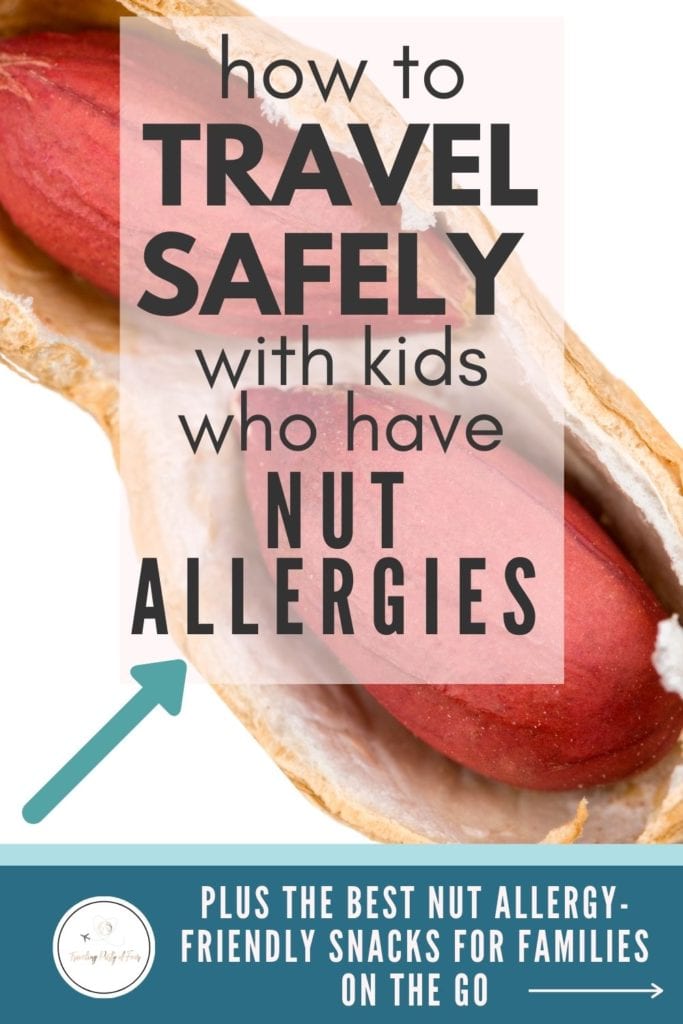
Affiliate Disclosure: There are affiliate links throughout this post. This means if you click on a link and purchase a product through that link, then I will receive a small commission for the referral. And that is kinda cool.
I dedicate this post to my fifteen-year-old daughter, Lexy, who has spent her life concerned with what and where she eats due to a severe nut and shellfish allergy. I am sad that she cannot fully experience many cultures because of her food allergies, but this does not stop her from embracing her wanderlust.
I am focusing on traveling with nut allergies (tree nuts and peanuts) since nut allergies are the most common cause of anaphylaxis in the United States.
**Disclaimer ~ I am not a Physician, and this post should not replace medical advice from your physician. The medical information in this post is from The American College of Allergy, Asthma, and Immunology (ACAAI), as well as my personal experience as a mom of a child with food allergies. If you feel you or your family member may have food allergies, discuss this with your healthcare provider, and get adequate testing and proper recommendations.**
Begin by researching common allergens in international cuisine.
It takes a little extra research and planning when traveling with children with nut allergies, but you can keep your children safe, have the trip of a lifetime, and show them the world.
Many cultures use nuts in their sauces, seasonings, and thickeners. For example, chefs in India often use cashews in curry sauces and in their thickening paste.
Chefs in the US (Chick-fil-A, Five Guys, Jimmy Johns, and Subway), Brazil, Mexico, and Thailand use peanut oil in their dishes.
Spain often uses ground almonds in place of flour for cakes; China uses peanuts in Dim Sum, and Argentina and Portugal use almond paste or powder in many desserts. Plus, here in the United States, it is hard to find packaged cookies, chocolate candy, or completely nut-free cakes. Many Greek dishes contain walnuts, Chinese dishes often contain cashews, and pesto is made with pine nuts.
Luckily, the chefs in Puerto Rico rarely use nuts. The staple is beans and rice, which both my kids love and can eat daily.
Maybe I am driving this point a little too hard, but I feel strongly about this topic for my girl, other kids, and adults with the same issue.
Did you know that the ingredient in Nutella is hazelnut? Marzipan is almond paste. Pralines are delicious, but they are brown sugar-coated pecans. And Baklava contains chopped nuts.
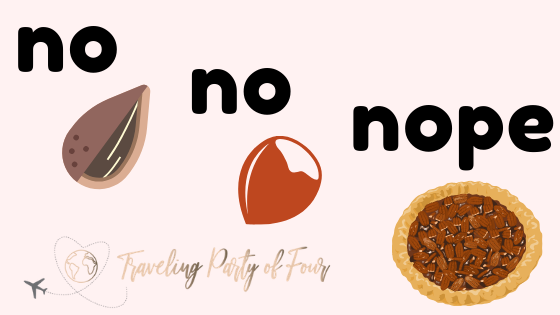
Many alcohols contain nuts for flavoring: nut brown ales, liquors, whiskeys, rums, vodkas, and gins, and there is more. Labeling of alcohol is not a requirement in the US. Always err on the side of caution, and if you are not 100% sure of what is in your drink, do not drink it.
My point is that avoiding nuts while traveling the world is hard. We need to be prepared to travel with nut allergies for the sake of our kiddos.
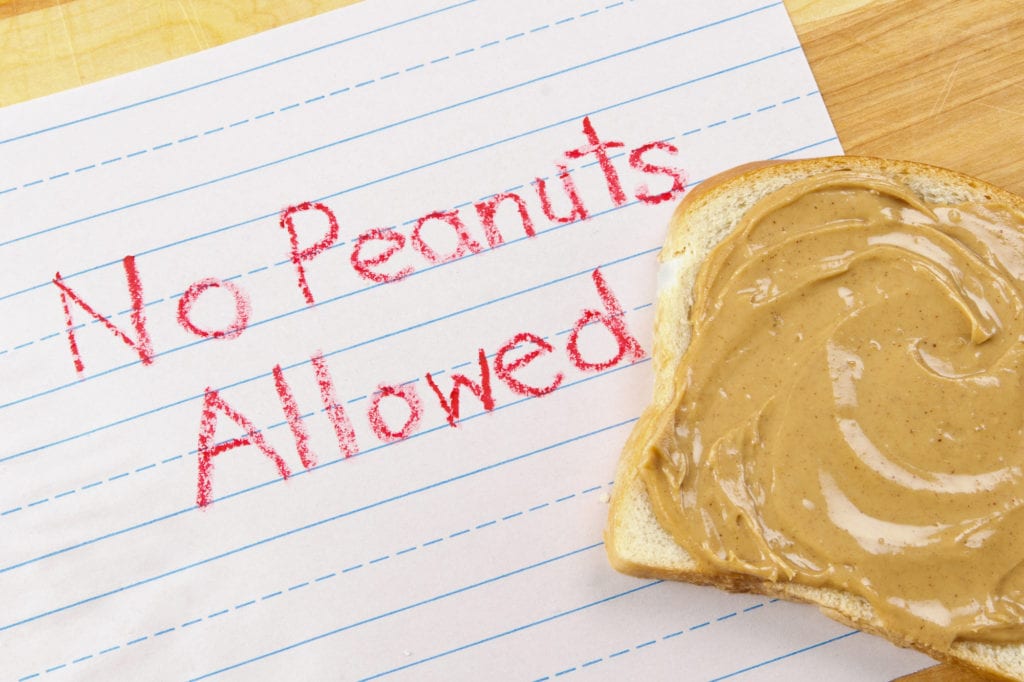
Nut Allergy Facts.
- Nuts are one of the eight most common food allergens.
- Peanuts are legumes.
- Tree nuts: walnuts, cashews, macadamia nuts, brazil nuts, pistachios, pecans, Filbert’s, hazelnuts, almonds.
- 25%-40% of individuals who are allergic to peanuts also react to at least one tree nut. (Statistic from ACAAI)
- Nuts are one of the food items most often linked to anaphylaxis.
- Less than 10% of people grow out of a nut allergy.
- Other triggers for people with nut allergies include oils and nut butters.
What happens if a person allergic to nuts ingests a nut?
Symptoms of an allergic reaction from ingesting an allergen.
- Itching of the mouth and throat.
- Lip swelling.
- Abdominal pain, nausea, vomiting.
- Runny nose.
- Rash.
- Difficulty swallowing.
- Shortness of breath.
An allergic reaction can lead to anaphylaxis if not treated promptly and adequately.
Anaphylaxis occurs when there is an overproduction of chemicals related to exposure to an allergen, i.e. eating a nut when a person is allergic. Anaphylaxis can happen quickly and can send the body into shock unless treated promptly and adequately.
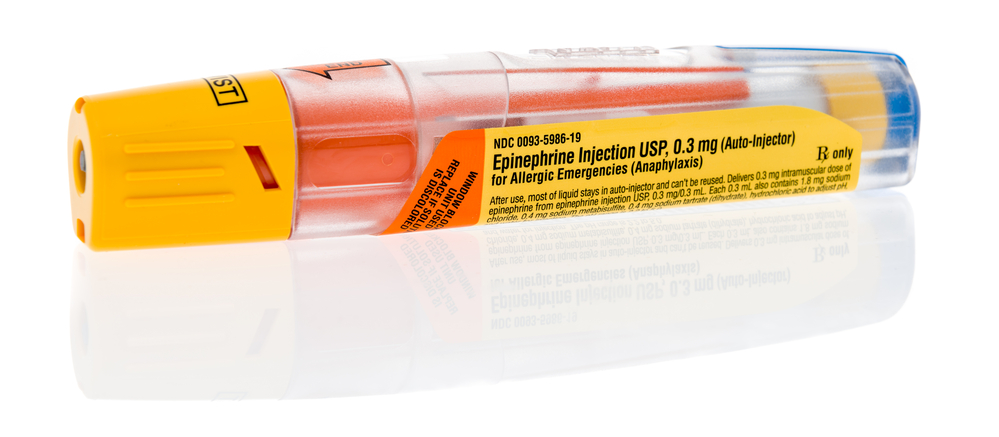
Symptoms of Anaphylaxis.
- Hives.
- Difficulty breathing.
- Tightness, pain in the throat.
- Abdominal pain, nausea, vomiting.
- Dizziness.
- Fainting.
- Heart is pounding.
- Severe anxiety and fear of impending doom.
- Cardiac arrest.
You are at risk for anaphylaxis if you have had it in the past. Even if you had a few mild symptoms I listed above, the next exposure to the allergen could cause more severe symptoms.
If this has happened to you, see your doctor or allergist. Get the appropriate testing and recommendations on managing your allergies.
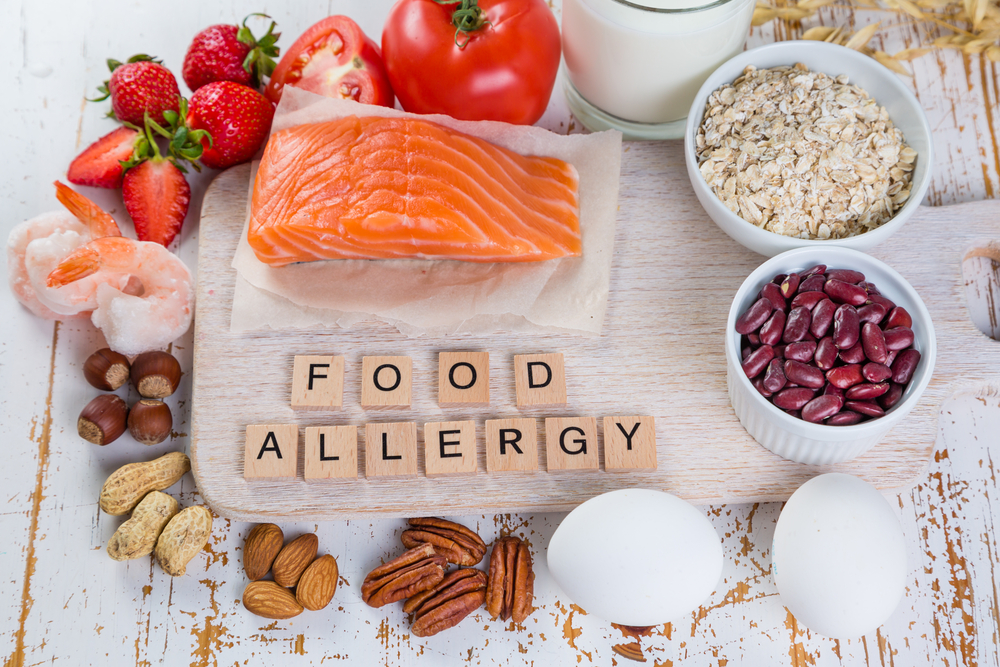
Tips for Traveling With Kids With Nut Allergies.
Always start with a family food allergy plan and prepare before leaving home.
Choose the right destination for your family. Sure, there are limitations to where you can travel, but honestly, not many. Traveling somewhere that will make your child and you anxious isn’t worth the worry. Choose wisely after you do your research.
1) Book a room with a kitchen so you can prepare meals.
2) Pack Your Medications.
**Always pack double anti-allergy medications in your carry on bag.**
- EpiPen Autoinjector. I always pack two, Lexy carries one and I carry the other. An EpiPen is a medical necessity according to TSA, I have never had an issue with EpiPen or Benadryl with TSA.
- Diphenhydramine (antihistamine). Same; two bottles of liquid diphenhydramine.

3) Research restaurants.
Lexy is a teenager. I let her do the research. It is her job, and she takes it seriously.
Always make sure the child with food allergies is comfortable with the restaurant choice. I can tell you from experience that they won’t eat if they are not satisfied with the food choices.
For her to be comfortable, this is what I do.
- Allow her to research and choose a restaurant based on her comfort level.
- Research if they have an allergy-free menu or an allergy-free area in the kitchen.
- Call ahead and ask about allergy policies.
- Allergy Eats (an app for ios) is the leading comprehensive guide for restaurants across the United States. The information is peer-reviewed. It includes which restaurants are doing well (as well as those who are not) in accommodating food-allergic customers.
- Biteappy is a comprehensive guide for food allergies and dietary needs for destinations worldwide.
I allow her this freedom now as we had a contamination issue at a restaurant. We chose a trendy, upscale seafood restaurant for dinner one night in Puerto Rico.
I assured her pasta with red sauce was on the menu, so she was okay with the choice. All of us ordered fish, not shellfish, as she is allergic. She ordered pasta with red sauce.
Well, her mouth started tingling, throat was hurting, coughing, crying. Her pasta was inadvertently contaminated with shellfish in the kitchen.
Watching your child having anaphylaxis is beyond horrible.
From that day forward, she had a say in our restaurant choice, and I allowed it. Now, she has fun with it and, as I said, takes her job seriously.
4) Purchase food allergy translation cards from Amazon.
These cards have been translated into over fifty languages. You can purchase them with nuts, shellfish, milk, Penicillin, MSG, sesame, eggs, sulfites, wheat, onions, tomatoes, and many others.
Emergency phone numbers may be different where you are traveling. In the United States, you should dial 911 for an emergency, but this is not the same everywhere.
- 911 in the United States and many US Territories.
- 112 is the EU Emergency number.
- 999 in Great Britain.
- This website provides a list of emergency numbers and calling codes, literally from A to Z.
5) Research the closest hospital to where you are staying.
Know where the medical facilities are located in the area where you are traveling. Keep in mind where you could refill a prescription if needed. And pack a copy of your EpiPen Prescription, just in case.
6) Purchase Travel Insurance.
No one wants to obsess over things that can go wrong while traveling. But, stuff happens, especially when there is a pre-existing condition. Purchasing travel insurance will provide peace of mind that you will be taken care of in the event of an unplanned, unfortunate circumstance.
Flying Safely with Food Allergies.
Experiencing a medical emergency mid-air with minimal resources has to be one of the scariest things that can happen—my best advice is not to chance anything on an airplane.
Pack snacks or even meals, and stick with foods you know will not cause a reaction. Don’t take a risk.
Airlines have different allergy policies. Here is a post that lists the allergy policies of the bigger airlines. As you can see, policies vary from airline to airline, so study up before you book your flight.
Tips from a teen when flying with food allergies.
- Let the airline know before boarding of your allergy.
- Pack more safe snacks than you think you will need.
- Bring your pillow and blanket.
- Wipe down your tray table, armrests, and seat before you settle in.
- Don’t eat the food provided by the airline, unless you have preplanned for a nut-free meal.
- If they insist on allowing passengers to consume nuts, ask for a buffer between you and the insistent passengers.
- Don’t put anything into the seat pocket. For one, someone could have disposed of their nut wrapper in the pocket, and for two, airplane seat pockets are full of nasty germs.
Learn More: Tips and Advice on How to Stay Healthy on an Airplane.
Nut Allergy-Friendly Snacks.
I am sure you have noticed the ongoing theme of packing your own nut-free snacks. HERE is a list for you of snacks that will pass TSA muster. Plus, you can always purchase snacks after your TSA interrogation.
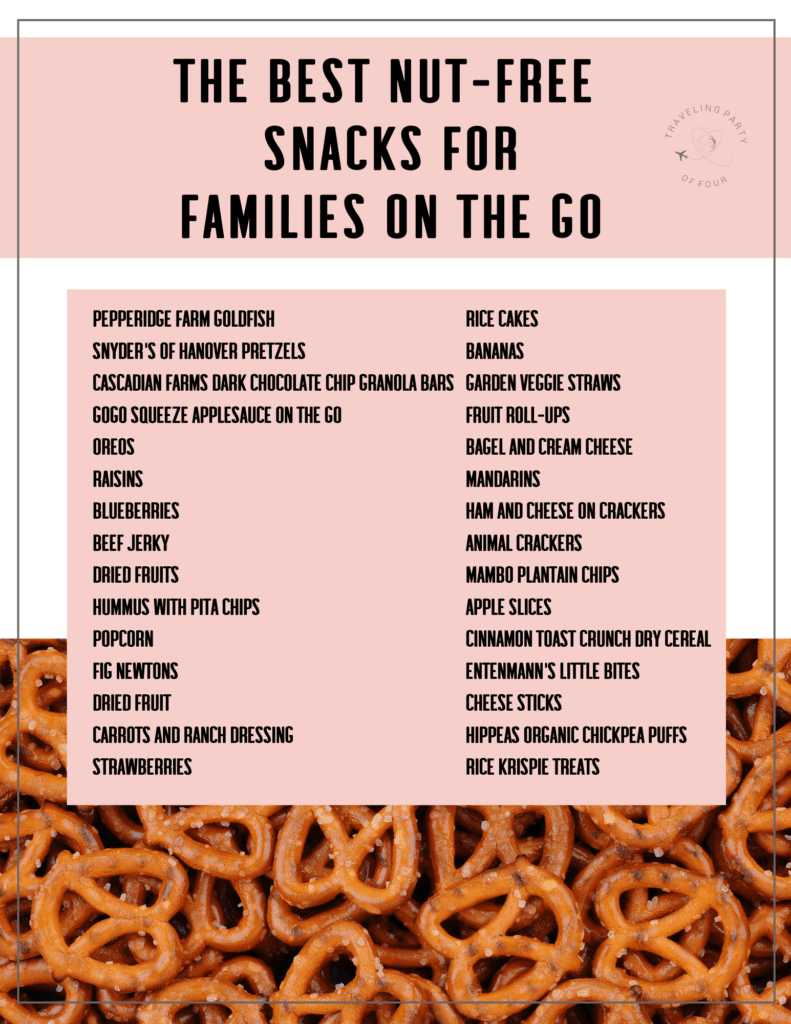
Traveling with a child who has food allergies can be scary and frustrating. But with research and planning, you can show your children the world. Don’t let your fears keep you from sharing your wanderlust with your family.
Do your research.
Make a plan.
Don’t get complacent.
Never take unnecessary risks.
And have the time of your life.





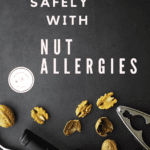
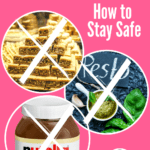
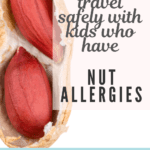

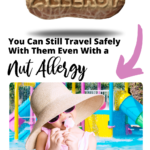
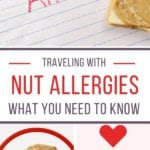
Such a great article. I don’t have kids, but I have a friend who’s husband is allergic so I will have to send her this article.
Yes, please send it. Not just for kids.
An incredibly useful article, especially the tips on flying! Thank you for taking the time to share the info
Thank you for reading.
I luckily do not have an allergy myself, but I always try to be mindful in my environment – especially on airplanes of what I am eating. It sounds like you handle it very well, and I’m sure Lexy is grateful to have someone who looks out for her so well! I’m glad that even though challenges presented with traveling, you nor Lexy let it stop you from seeing the world!
I almost wrote a section on “How to be mindful of others with allergies.” I still may add a section on that. Thanks for stopping by and reading.
what a great and thorough guide for anyone that might be traveling with anyone who has a nut allergy.
Thank you for commenting.
Great guide for those allergic! I can’t imagine how much one has to think about with allergies otherwise.
It can be frustrating. I love experiencing different cuisines, and I wish I could share this with Lexy, but she just can’t. It can be frustrating and sad. But, we make do with what we have and keep going.
Great article filled with a lot of helpful information!
Thank you, Amanda.
This is such a helpful post! My family visited Spain last summer and it was the first time we were truly abroad with my younger brother who has nut allergies. Thankfully, my parents are both fluent in Spanish, but it was still tricky checking food labels and ordering at restaurants since nuts had a different name in Spain. I will definitely look into those translation cards. Thanks!
Those are great. My husband speaks Spanish, too. It is so helpful, you are right, nuts are called different things in different languages. Plus, he can communicate with the servers.
WoW! This is definitely an amazing article about this issue! As soon as I finished reading, I sent it to 4 friends who are always facing the nut allergy problem with their kids, and they are afraid to travel. Hopefully, this will help them! Thanks for sharing!
Thank you so much for sharing. So many people don’t realize the fear and the struggle. I am so happy to get awareness out there.